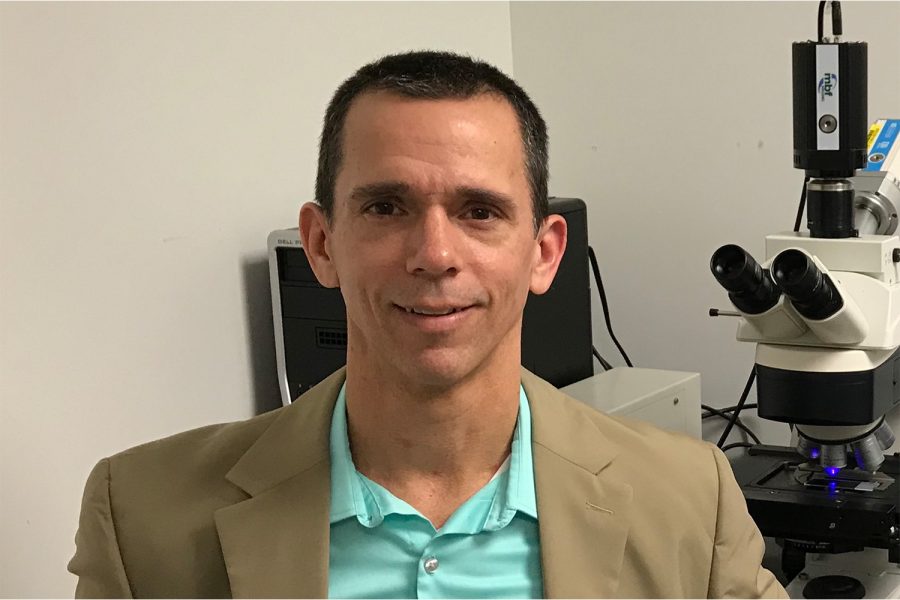UI researchers find link between a brain circuit and reaction to stress
After various experiments with rats, UI researchers concluded that a certain circuit in the brain is linked to how humans respond to a threat.
November 6, 2022
Researchers at the University of Iowa recently discovered a new function for a pathway in the brain that decides whether people respond to a threat passively or actively.
In a series of experiments involving rats at the UI, researchers identified how a neural pathway between two brain regions — the prefrontal and brainstem — influences how rats respond to stress.
Jason Radley, UI Department of Psychological and Brain Sciences associate professor and a lead author of the study, said his team has been interested in understanding how the brain responds to stress for years.
“When people are exposed to life stressors, they show what we refer to as coping behavior. Coping can either be active or passive,” Radley said. “Active coping behavior involves dealing with some kind of stress in a way that seeks to make it go away, whereas passive coping behavior usually involves a more avoidant response.”
Radley said people who show more passive coping in response to life challenges tend to be more susceptible to stress-related diseases and psychiatric illnesses as opposed to people who practice active coping behavior.
“People that actively cope tend to show lower levels of stress hormones, lower levels of the fight or flight response, and lower adrenaline levels, whereas people that passively cope have higher levels of these responses,” Radley said.
Radley and his team used the standpoint of studying rat models to understand human stress responses. The researchers exposed the rats to a stressor, which came in the form of a shock probe, and gave them a choice to cope with it actively or passively.
One experiment involved exposing the rat to a stressor in different conditions.
“The rats buried the shock probe that they had received a shock from when we stimulated this pathway in the brain, promoting an active coping behavior,” Shane Johnson, a former graduate student at the UI and co-author of the study, said.
RELATED: UI researchers help discover 60 new genes linked to autism
The researchers then removed the rat’s ability to actively cope by removing the bedding material from its testing chamber, which prevented them from burying the probe.
“When we did this, the animals switched to a passive coping response, which means that they aren’t actually kind of engaging in active behaviors to mitigate the threat,” Johnson said.
When the team activated the neural pathway, the rats instead responded actively to the stressor.
Radley said the researchers discovered what the circuit can do during these extreme challenges, which is to reverse the coping method of an individual with a passive response.
“When the rats were forced into the more passive coping response, this circuit robustly reversed all of these effects,” he said.
The researchers also found changes in hormones were linked to each coping mechanism.
“The goal was to link whether or not differences in the capacity of the animal to show active or passive coping responses was somehow linked to changes in hormones,” Victor Viau, a contributing author of the study from the University of British Columbia, said.
Viau said he and his teammates were able to link the association between the animal’s choice of behavior, the circuit involved, and the extent to which the behavior influenced hormonal responses.
Radley said the experiments show the body’s response to stress is adaptive and helpful for the individual to deal with daily challenges.
“A common misconception of stress in modern society is that it’s bad,” Radley said. “And yes, clearly, stress can be bad if there’s too much of it. The problem is when we’re exposed to these extreme situations, and the passive response kicks in.”
Overall, the researchers are interested in looking at this pathway’s role and how it overcomes social withdrawal.
“The idea that this may also be involved in social behavior is of interest to us because a lot of what we think about with stress in modern society is not the types of life-threatening events,” Radley said.



